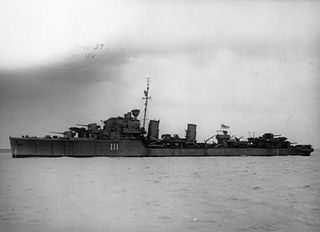
HMS Impulsive was an I-class destroyer built for the Royal Navy during the 1930s. She saw service in World War II before being scrapped in 1946. She has been the only ship of the Navy to bear this name.
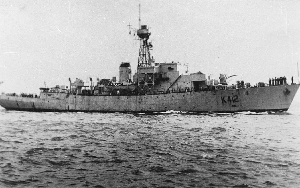
HMS Bamborough Castle was one of 44 Castle-class corvettes built for the Royal Navy during World War II. Completed in mid-1944 she sank the U-boat U-387 on 9 December. Aside from a brief period assigned to the Fishery Protection Squadron in 1946, the rest of her career was spent as part of the fleet reserve until she was scrapped in May 1959.
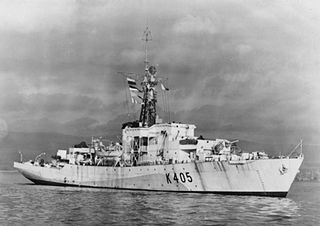
HMS Alnwick Castle was one of 44 Castle-class corvettes built for the Royal Navy during the Second World War. She was named after Alnwick Castle in Northumberland. Completed in late 1944, the ship served as a convoy escort until the end of the war, helping to sink one German submarine. The corvette was placed in reserve after the war and was sold for scrap in 1958.
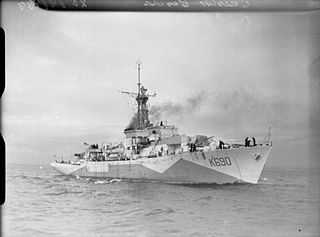
HMS Caister Castle was one of 44 Castle-class corvettes built for the Royal Navy during World War II.
HMS Carisbrooke Castle (K379) was one of 44 Castle-class corvettes built for the Royal Navy during World War II.

HMS Raider was a R-class destroyer built for the Royal Navy during the Second World War.

HMS Saltash (J62) was a Hunt-class minesweeper of the Aberdare sub-class built for the Royal Navy during World War I. She was not finished in time to participate in the First World War and survived the Second World War to be sold for scrap in 1947.

HMS Adventure, pennant number M23, was an Adventure-class minelaying cruiser of the Royal Navy built in the 1920s that saw service during the Second World War. Her commander between 1928 and 1929 was the future First Sea Lord John H. D. Cunningham. Laid down at Devonport in November 1922 and launched in June 1924, Adventure was the first vessel built for service as a minelayer; she was also the first warship to use diesel engines, which were used for cruising. Adventure first joined the Atlantic Fleet, then was transferred to the China Station in 1935. In World War II, the ship was damaged in 1941 and 1944, and was converted to a landing craft repair in 1944. In 1945 Adventure was reduced to reserve and in 1947 she was sold and broken up for scrap.
HMS Owen was a Bay-class frigate built for the Royal Navy during World War 2.
HMS Derby was a Hunt-class minesweeper of the Aberdare sub-class built for the Royal Navy during World War I. She was not finished in time to participate in the First World War and survived the Second World War to be sold for scrap in 1946.
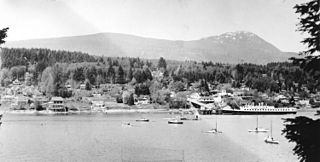
HMS Swindon was a Hunt-class minesweeper of the Aberdare sub-class built for the Royal Navy during World War I. She was not finished in time to participate in the First World War and was sold into civilian service in 1921.
HMS Fareham was a Hunt-class minesweeper of the Aberdare sub-class built for the Royal Navy during World War I. She was not finished in time to participate in the First World War and survived the Second World War to be sold for scrap in 1948.

HMS Redoubt was an R-class destroyer built for the Royal Navy during the Second World War.
HMS Selkirk was a Hunt-class minesweeper of the Aberdare sub-class built for the Royal Navy during World War I. She was not finished in time to participate in the First World War and survived the Second World War to be sold for scrap in 1947.

HMS Wolfhound was one of 21 W-class destroyers built for the Royal Navy during the First World War. Completed in 1918 the ship only played a minor role in the war before its end. The ship was converted into an anti-aircraft escort destroyer during the Second World War and was badly damaged during the Dunkirk evacuation. Wolfhound survived the war and was sold for scrap in 1948.
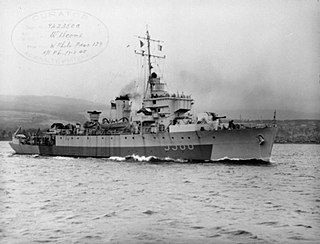
HMS Welcome was a reciprocating engine-powered Algerine-class minesweeper built for the Royal Navy during the Second World War. She survived the war and was scrapped in 1962.
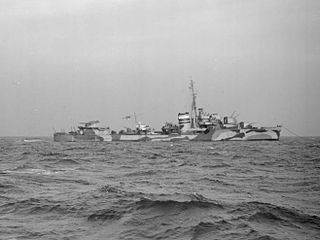
HMS Loyal was a L-class destroyer built for the Royal Navy in the late 1930s, although she was not completed until after World War II had begun.
HMS Dumbarton Castle (K388) was one of 44 Castle-class corvettes built for the Royal Navy during World War II. She saw action in the Battle of the Atlantic during the war.

HMS Morpeth Castle was one of 44 Castle-class corvette built for the Royal Navy during the Second World War. She was named after Morpeth Castle in Morpeth. Completed in 1943, she was used as a convoy escort during the war and was scrapped in August 1960.
HMS Tintagel Castle was one of 44 Castle-class corvette built for the Royal Navy during the Second World War. She was named after Tintagel Castle in Tintagel. Completed in 1943, she was used as a convoy escort during the war and was scrapped in August 1960.













